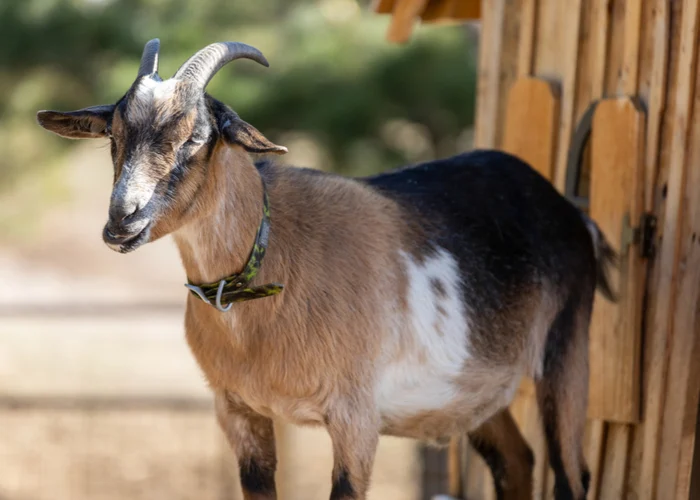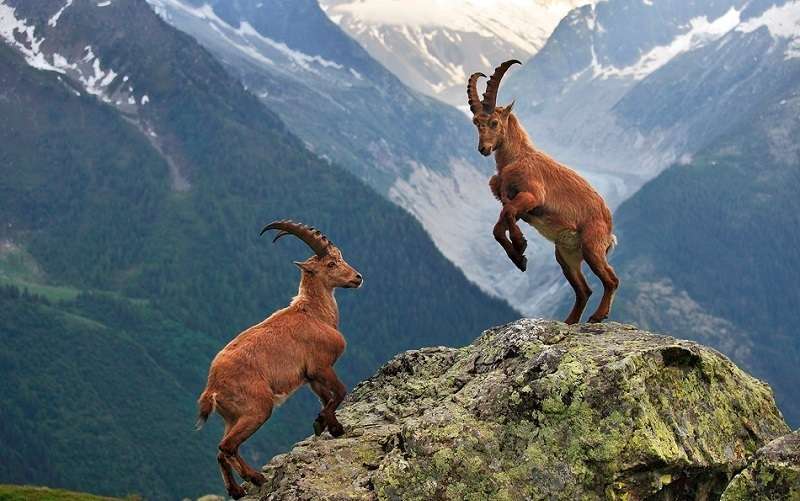
Description:
The Oberhasli goat is a medium-sized, attentive, and physically active animal. The Oberhasli goats are predominantly chamois in color. Bey – ranging from light to deep red bay, with the latter being the most attractive. The does might also be a solid black color, but not the bucks. The Oberhasli goat may have a few white hairs in its coat and near its ears. Their entire body is covered in many black patterns.
From each eye to a black muzzle, there are two black stripes running down the face. Their forehead is almost entirely black, with black stripes running from the base of each ear to a point slightly behind the poll and continuing as a dorsal stripe along the neck and back to the tail.
Their legs are black below the knees and have black hocks. Their udder and belly are also black. Moreover, the Oberhasli goat’s ears are bay on the outside and black inside. The heads of bucks often have more black hair than those of does.

Behavior:
Oberhasli goats have highly amiable dispositions and a gentle demeanour. It is a very alert and lively creature. Excellent milk producers are the does.
Benefits/Uses:
The top dairy goat breeds include Oberhasli goats. The major reason they are kept is to produce milk. They are appropriate for raising dairy goats for profit.
Origin/History:
A contemporary American breed of dairy goat is called the Oberhasli. It is descended from a subspecies of Chamois Colored Goat found in central Swiss’ Oberhasli region of the Bernese Oberland.
In 1906 and 1920, Oberhasli type goats were introduced into the States, but they were not bred ethically, and their lineages were lost. All American purebred Oberhaslis are descended from five Chamois Colored Goats that H. O. Pence was brought to the country from Switzerland in 1936. These animals were registered as Swiss Alpines up until the 1970s. American Alpines are crossbreeds with French Alpine or American Alpine stock.
About 1977, a breeders’ organization called the Oberhasli Breeders of America was established. The Oberhasli was recognised as a breed by the American Dairy Goat Association in 1978 or 1979. (ADGA). The new breed was developed from a purebred herd that was documented by breeder Esther Oman in California. The ADGA retrieved Oberhasli-type goats with partial breedings from its other herdbooks in 1980.
Keeping as pet:
- Housing
For Oberhasli goat rearing, a good housing or shelter facility is crucial. The Oberhasli goat breed, like many other domestic goat breeds, prefers to live in a clean, dry environment. So, raising a house off the ground will be highly beneficial for Oberhasli goat husbandry.
The house should be constructed in a way that makes cleaning it simple. Build a reliable ventilation system, and make sure that there is an enough supply of light and clean, fresh air inside the home. For a medium-sized goat breed, 12 square feet will often be sufficient. If you decide to grow your goats in a stall-fed method, you will need to set up a separate play area.
- Feeding
The most crucial aspect of Oberhasli goat husbandry is providing the animals with very high-quality food. Therefore, make sure your goats have access to enough nourishing food. Give them the appropriate amount of grains and greens.
The Oberhasli goats require some vitamins and minerals in addition to a high-quality diet. Therefore for better advice, check with a local veterinarian. And make sure you constantly give your goats adequate clean, fresh water to meet their needs.
- Caring
The animals’ growth and health will be promoted through special attention, combined with good food and shelter. Therefore make an additional effort to care for your pets. Deworm and immunize them as soon as possible, and make an effort to always take good care of breeding bucks, pregnant does, and nursing does.
Table





